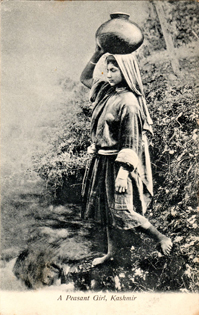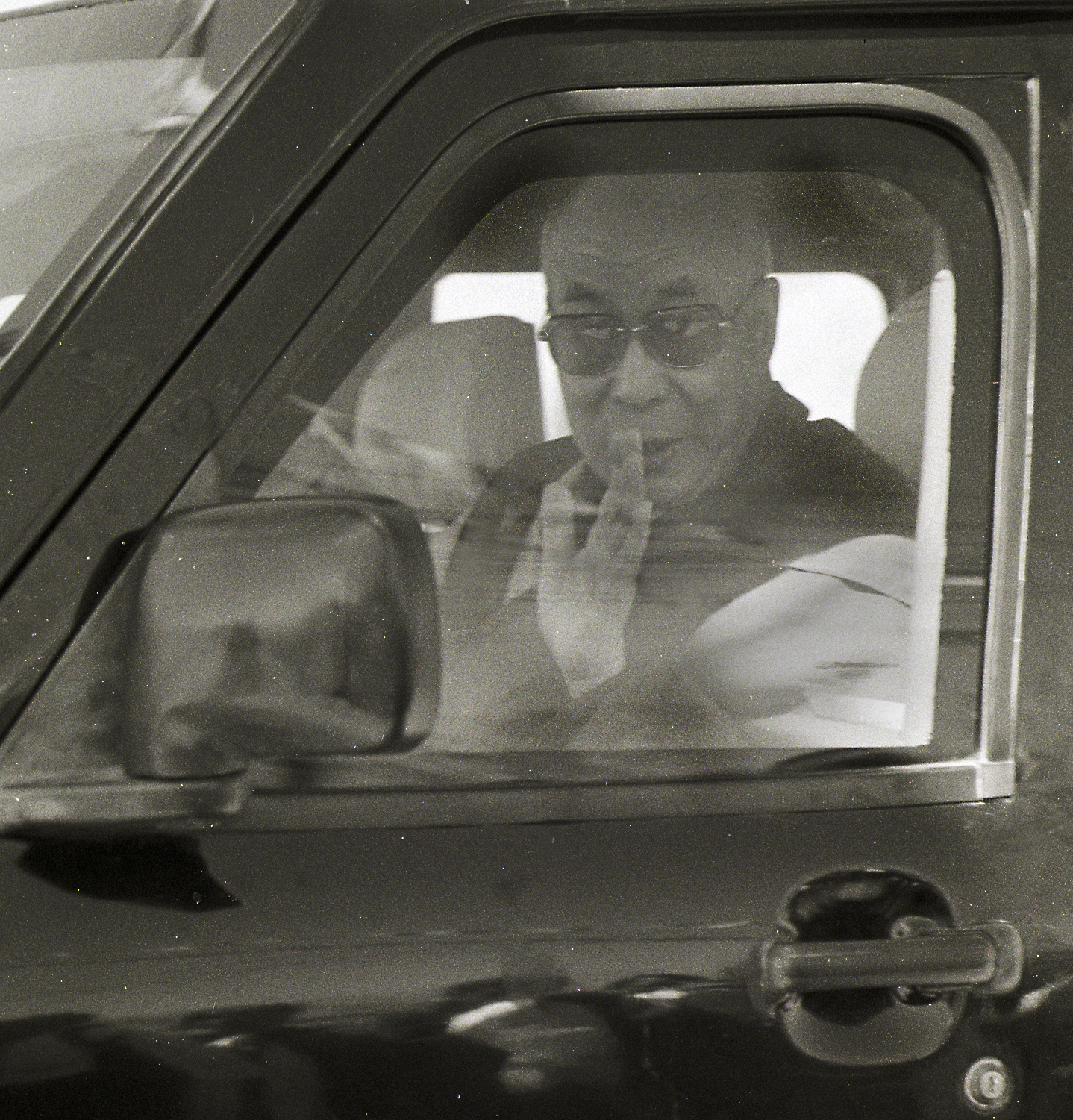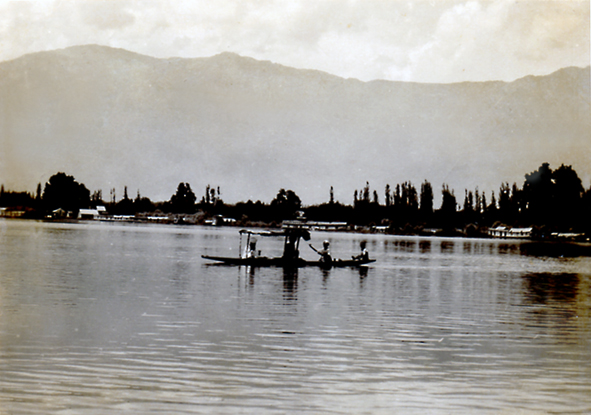The Congress Party has led India into slow decline over the past few years so it is not surprising that the Bharatiya Janata Party (BJP) would win but who would have bet on the first outright majority in 30 years. The country’s imminent Prime Minister, Narendra Modi, comes with a lot of baggage from his time as Chief Minister of Gujarat. He is a product of the right wing RSS, the most prominent Hindu Nationalist group in India, and has been criticised for his actions against Muslims notably the violent clash of 2002. I have been to Kutch, Gujarat several times since 1995 and seen the changes Continue reading
India’s election: result imminent
This 69 day election will be the longest in India’s electoral history. Social media have been used extensively in canvassing and for the first time voters have the opportunity not to vote for any candidates on offer. Here are a few varied voting reports. Last Monday the Times of India warned of a heat wave (44°C) and how this might reduce turnout in Kutch. The T of I also reports that ‘Chhattisgarh defies Maoists, creates history with 69.48% polling’. Meanwhile ‘Tribune’ on 10 May reports on the killing of one person by the police during protests in Srinagar against Indian rule. A curfew followed. My favourite comes from Zee news in Leh, Ladakh which says that at 5000 metres ‘Anlaythu polling station became the world’s highest on Wednesday.’ Choppers were used to fly in the ’60-70 people expected to cast their votes.’ A very high turnout was expected. Continue reading
India: Election 2014
The legendary cricketer Sachin Tendulkar turned 41 last Thursday and cast his vote in Mumbai on the same day. According to NDTV Sports he said: “Every run counts in the game of cricket and every vote counts in an election”. How different this is from Kashmir.
On the same day Channel News Asia reports that “millions cast ballots in the teeming financial capital Mumbai” but “voting was light to non-existent at heavily guarded polling stations in areas of Anantnag constituency after a campaign of intimidation by local militant groups, who killed three people this week and warned locals not to take part.” As an outsider Continue reading
Midnight’s Descendants by John Keay
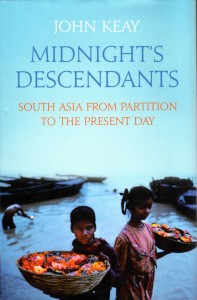 Anyone who has an interest in the partition of South Asia in 1947 and the amazing consequences must read this book. The Independent comments: “This absorbing, important history of South Asia over the six decades since British India was partitioned is the first time a book has been written on the history of this region as a whole.” Moreover practically every page has a surprising fact or an unexpected angle. India alone has the 2nd largest population in the world, the 11th largest economy, rapid growth, huge income inequality (about 30% of people live below the Poverty Line – more than the whole population of the USA) John Keay leads us, rather optimistically, to consider the future of this fast-moving, dysfunctional and sometimes volatile region.
Anyone who has an interest in the partition of South Asia in 1947 and the amazing consequences must read this book. The Independent comments: “This absorbing, important history of South Asia over the six decades since British India was partitioned is the first time a book has been written on the history of this region as a whole.” Moreover practically every page has a surprising fact or an unexpected angle. India alone has the 2nd largest population in the world, the 11th largest economy, rapid growth, huge income inequality (about 30% of people live below the Poverty Line – more than the whole population of the USA) John Keay leads us, rather optimistically, to consider the future of this fast-moving, dysfunctional and sometimes volatile region.
Wings of hope
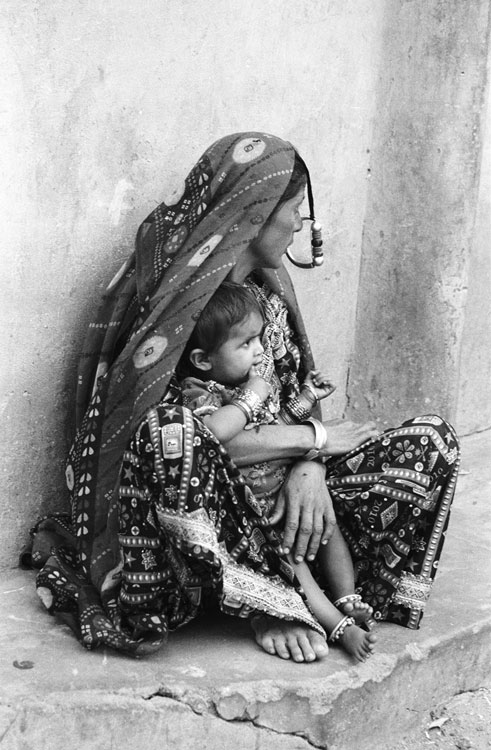 Girls of The Abbey School, Reading, UK ran a charitable event in March and raised a remarkable £2600 for Wings of Hope which supports school projects for underprivileged children in Chennai, India and Malawi. This was part of the Snapshots Projects for fundraising schemes and awards programme run by WOHAA.
Girls of The Abbey School, Reading, UK ran a charitable event in March and raised a remarkable £2600 for Wings of Hope which supports school projects for underprivileged children in Chennai, India and Malawi. This was part of the Snapshots Projects for fundraising schemes and awards programme run by WOHAA.
Michael Thomas of Pipal Press donated a unique framed print of this picture of a Jat woman and child in Bhuj, Kutch for a raffle. WOH’s mission is to ’empower through education’ so the picture seemed very appropriate. The winner was Charles Lovibond, a teacher at the Abbey School.
Dhokra work – Bastar district
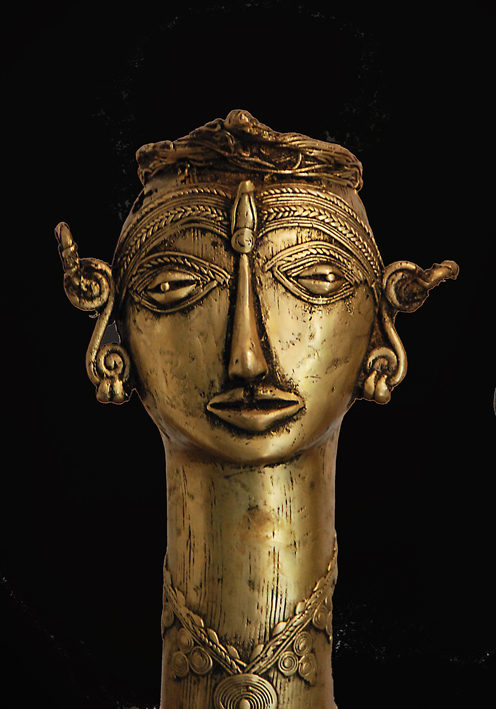
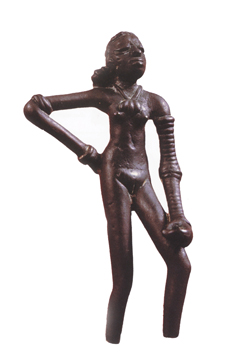 Dhokra work or the lost wax technique has been in use for 4500 years and the earliest example was the famous dancing girl found at Mohenjo-daro made during the Indus Valley Civilisation. This piece is now in the National Museum, New Delhi.
Dhokra work or the lost wax technique has been in use for 4500 years and the earliest example was the famous dancing girl found at Mohenjo-daro made during the Indus Valley Civilisation. This piece is now in the National Museum, New Delhi.
This wonderful brass tribal head is modern and was made in the Baster district in Chhattisgarh where the technique continues to flourish in villages in and around Kondagaon. Sadly this area is better known now for being part of the ‘Red Corridor’ due to extensive Naxalite-Maoist insurgency.
Kashmir: BBC HARDtalk
In the early hours of Thursday 30th of January 2014 the BBC broadcast HARDtalk, an excellent interview by Stephen Sackur. He was talking with Omar Abdullah, the Chief Minister of Jammu and Kashmir, about the State’s varied situation since Partition in 1947, the turbulent so-called ‘troubles’ since 1990 and the future of the State and it’s status in India, given that the BJP is likely to be the ruling party in forthcoming elections. They also discussed the possibility of a permanent solution with Pakistan and internal militancy. Continue reading
LOkesh Ghai – URGENT – Talk about the Rabari kediya

Making a kediyun as worn by Rabari men, Kutch
LOkesh Ghai, an artist and teacher at Kala Raksha Vidhyalaya, is presenting an exhibition and the work of his master’s thesis on the making of the Rabari kediya (traditional jacket) in a cultural context. He is giving a talk at Manchester City Galleries on Sunday 26th January – India’s Republic Day. Not to be missed by those interested in Kutchi costume. Here is the web link: http://www.manchestergalleries.org/our-other-venues/platt-hall-gallery-of-costume/events/
Kashmir – something different
My post in December gives a clue about some of the serious things that are happening now in Kashmir, especially as the US and other foreign troops leave Afghanistan. Now it is time to look at something quite different.
I have been following a wonderful web site that gives a fascinating insight into the rich cultural history of this amazing State. It neatly avoids direct association with the volatile politics, separatism etc. but there are hints of the consequences.
The site is Search Kashmir, in bits and pieces . The owner, Vinayak Razdan summarises it as “A blog about Kashmir. Culture, Literature, Art, Music, History, Vintage Photographs and other minor distractions.” It is definitely worth spending plenty of time exploring; it’s full of information and totally absorbing.
It’s over
I woke at 3.30 am today (Friday) and could not sleep so turned on the TV. At that moment BBC World News announced that the Environment Ministry had just rejected Vedanta’s bauxite mining proposal in Odisha’s (Orissa) Niyamgiri hills.
This is the first time an environment referendum has been conducted on a directive by the Supreme Court to find out whether mining in Niyamgiri will be tantamount to an infringement of the religious, community and individual rights of local forest dwellers. In this case mainly the Dongria Kondh tribe.
Happy New Year
Kashmir: international film festival
The DNA newspaper reports that 22 films will be shown at the first ever Kashmir International Film Festival next Saturday 21 December at the Sher-e-Kashmir International Convention Centre next to Dal Lake in Srinagar. This is the first festival for 23 years since the now defunct ‘Allah Tigers’ forced all cinemas in the Valley to be shut down. This is a remarkable prospect.
I made my first visit to Ladakh and Kashmir last summer when the roads were clear of snow and was greatly struck, not only by the astonishing scenery, but also by the serious political undercurrents. In July Ladakh was invaded briefly by China and thankfully on a small scale. I have yet to understand Kashmir; the complexities are huge. Those of us in the west have heard nearly nothing of the euphemistically called ‘troubles’. Continue reading
New web site
This is the new web site for Michael Thomas and Pipal Press. Please note the address: www.pipalpress.com.
The existing blog http://pipalpress.blogspot.co.uk/ which I started four years ago has served me very well and I will run it in parallel for the time being. It has had hits from over 50 countries and generated a lot of interest. However I now want to widen the scope and coverage.
The main objectives are:
- Greater clarity about the publications which now include photographs.
- Easier access and payment methods. Publications are not available from Amazon and other discount sellers.
- Most importantly I wish to generate a dialogue with others who are interested in this type of subject matter, mainly obscure parts of India but widening to Europe.
- The posts in the blog will continue in the section marked ‘Rolling News and Comment’. Viewers are invited to leave comments which can be seen by others.
- The ‘Get in Touch’ section gives direct access to me. Please feel free to offer comments, suggestions, ask questions, give interesting references etc.
I hope you enjoy exploring.
Aunt Elsie’s Christmas Do
Jelly and Aunt Elsie’s Christmas Do 2013
This is the second of these Christmas Fairs held in the Market Place, Reading. Under the heated marquee there will be many makers, designers, recyclers and beautiful art, textiles and handmade gifts all by local artists. Not to be missed. See: 4. Pipal Press: Michael Thomas
Kutch: Adani and the environment
I have neglected Kutch due to my interest in the Orissan dispute and must put this right. A similar conflict is developing as I forecast in my recent book. Adani, the owner developers of Mundra port, have been found guilty of a number of environmental violations including damage to the mangrove forests with consequent soil erosion. In September last year Central Government set up the small Nairain Committee to look into these violations and others that are developing this area. Continue reading
Orissa: Super Cyclone Phailin
 This is the cyclone season in Orissa. I had forgotten about this until news was announced that Cyclone Phailin which is currently filling the Bay of Bengal is due to hit Orissa between Gopalpur and Vizakhapatnam on Saturday evening. And at about 136 mph. Already 500,000 people have been moved away from the coast.
This is the cyclone season in Orissa. I had forgotten about this until news was announced that Cyclone Phailin which is currently filling the Bay of Bengal is due to hit Orissa between Gopalpur and Vizakhapatnam on Saturday evening. And at about 136 mph. Already 500,000 people have been moved away from the coast.
Comparisons have been made with the super-cyclone of 1999 when around 15,000 lives were lost. The authorities say that they are better prepared this time. But a film crew for Al Jazeera reported that fishermen were getting nets ready as normal today as no one had issued a warning. A lucky escape from this dangerous coastal zone.
The tribal people noted in my book generally live in the high forested hills away from the coast. Even so they are used to these very strong winds and expect to replace their rice-thatched roofs every two years or so.

Postscript: A report on 18 October 2013 gave the total number who died in Orissa as a result of Cyclone Phailin (Thai for sapphire) as 44. This is remarkably low when compared with the cyclone just 14 years earlier.
Finally?
At long last the twelve Gram Sabhas are over and the Dongria Kondhs have unaminously rejected Vedanta’s plans to mine high-grade bauxite from their sacred Niyamgiri Hills, which provide the tribe’s livelihood. Now these consultative decisions have to be considered by the Ministry of Forests and Environment, which has the final say. It would be a major volte-face if the Ministry goes against this massive rejection given its record of upbraiding Vedanta for breaking the law, which led Jairem Ramesh to say ‘Therefore the project cannot go ahead’ just three years ago. This should be the end of the matter. Continue reading
Supreme Court judgment – Vedanta loses
 After four years of tracking the conflict between Vedanta Resources and the Dongria Kondh tribe about mining bauxite from the sacred Niyamgiri Hills I am glad to report that the Supreme Court has rejected the Appeal by Orissa Mining Corporation. Continue reading
After four years of tracking the conflict between Vedanta Resources and the Dongria Kondh tribe about mining bauxite from the sacred Niyamgiri Hills I am glad to report that the Supreme Court has rejected the Appeal by Orissa Mining Corporation. Continue reading
A visit to Bhuj
 Compare this picture with page 65 of the book; the pastoral foreground has not changed for centuries but beyond the palm is a new road leading to Tata’s coal-fired power station. The pervasive fumes soon tickle throats. There was a Mela on the day after which gave visitors the chance to learn more about the textiles, techniques and chat with students including many Rabari women.
Compare this picture with page 65 of the book; the pastoral foreground has not changed for centuries but beyond the palm is a new road leading to Tata’s coal-fired power station. The pervasive fumes soon tickle throats. There was a Mela on the day after which gave visitors the chance to learn more about the textiles, techniques and chat with students including many Rabari women.Much work has been done to the Aina Mahal. There is excellent new lighting in the once gloomy corridors and many paintings have been professionally cleaned. Even the Prag Mahal has been reopened to the public.
A walk down Saraf Bazaar revealed that the lady owner of Senorita (p53) has sadly died last year but an old friend keeps the shop going.
Now on sale in India
Both books are now available at the famous specialist Art Book Center in Ahmedabad, Gujarat, India and a place of pilgrimage for booklovers.
The book on Kutch is also on sale at Nalanda Bookshop in the Taj Palace Hotel, Mumbai. Otherwise it can be bought direct from Pipal Press and nowhere else.

